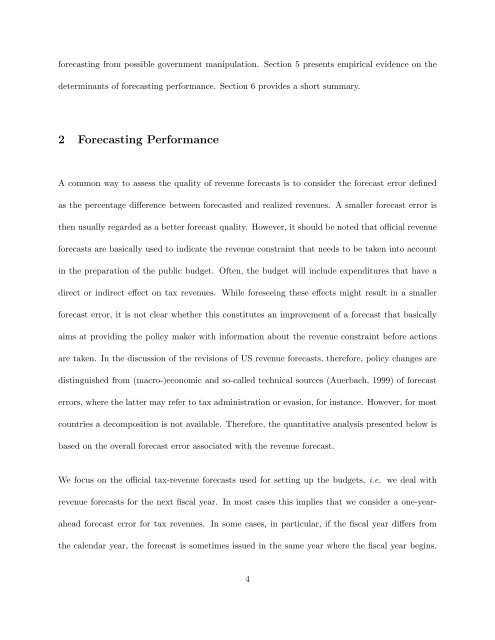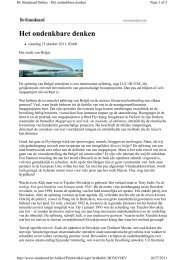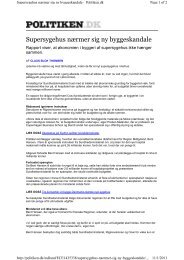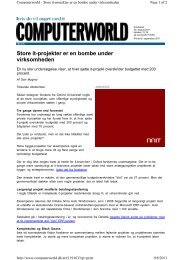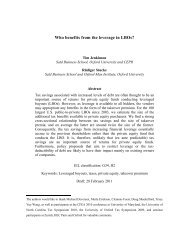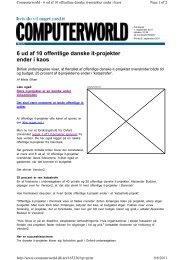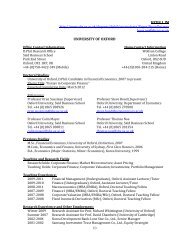Revenue Forecasting Practices: Differences across Countries and ...
Revenue Forecasting Practices: Differences across Countries and ...
Revenue Forecasting Practices: Differences across Countries and ...
You also want an ePaper? Increase the reach of your titles
YUMPU automatically turns print PDFs into web optimized ePapers that Google loves.
forecasting from possible government manipulation. Section 5 presents empirical evidence on the<br />
determinants of forecasting performance. Section 6 provides a short summary.<br />
2 <strong>Forecasting</strong> Performance<br />
A common way to assess the quality of revenue forecasts is to consider the forecast error defined<br />
as the percentage difference between forecasted <strong>and</strong> realized revenues. A smaller forecast error is<br />
then usually regarded as a better forecast quality. However, it should be noted that official revenue<br />
forecasts are basically used to indicate the revenue constraint that needs to be taken into account<br />
in the preparation of the public budget. Often, the budget will include expenditures that have a<br />
direct or indirect effect on tax revenues. While foreseeing these effects might result in a smaller<br />
forecast error, it is not clear whether this constitutes an improvement of a forecast that basically<br />
aims at providing the policy maker with information about the revenue constraint before actions<br />
are taken. In the discussion of the revisions of US revenue forecasts, therefore, policy changes are<br />
distinguished from (macro-)economic <strong>and</strong> so-called technical sources (Auerbach, 1999) of forecast<br />
errors, where the latter may refer to tax administration or evasion, for instance. However, for most<br />
countries a decomposition is not available. Therefore, the quantitative analysis presented below is<br />
based on the overall forecast error associated with the revenue forecast.<br />
We focus on the official tax-revenue forecasts used for setting up the budgets, i.e. we deal with<br />
revenue forecasts for the next fiscal year. In most cases this implies that we consider a one-year-<br />
ahead forecast error for tax revenues. In some cases, in particular, if the fiscal year differs from<br />
the calendar year, the forecast is sometimes issued in the same year where the fiscal year begins.<br />
4


